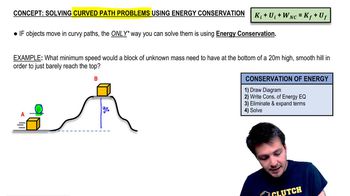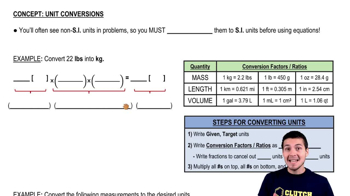Here are the essential concepts you must grasp in order to answer the question correctly.
Potential Energy Curve
A potential energy curve represents the potential energy of a system as a function of the position of its components. In the context of molecular oscillations, it illustrates how the energy of a molecule changes as it moves between different positions, indicating stable and unstable configurations. The shape of the curve helps determine the energy states and the behavior of the molecule, including oscillation frequencies and maximum speeds.
Recommended video:
Curved Paths & Energy Conservation
Kinetic Energy
Kinetic energy is the energy possessed by an object due to its motion, calculated using the formula KE = 1/2 mv², where m is mass and v is velocity. In the context of oscillating molecules, the total kinetic energy of the system is crucial for determining the maximum speed of the atoms. As the potential energy decreases, the kinetic energy increases, allowing for the calculation of the maximum speed at which the atoms can oscillate.
Recommended video:
Intro to Rotational Kinetic Energy
Mass and Atomic Units
Mass in physics is a measure of the amount of matter in an object, typically expressed in kilograms or atomic mass units (u). In this question, the mass of an oxygen atom is given as 16 u, which can be converted to kilograms using the conversion factor 1 u = 1.66 × 10⁻²⁷ kg. Understanding the mass of the atom is essential for calculating its kinetic energy and, consequently, its maximum speed during oscillation.
Recommended video:




